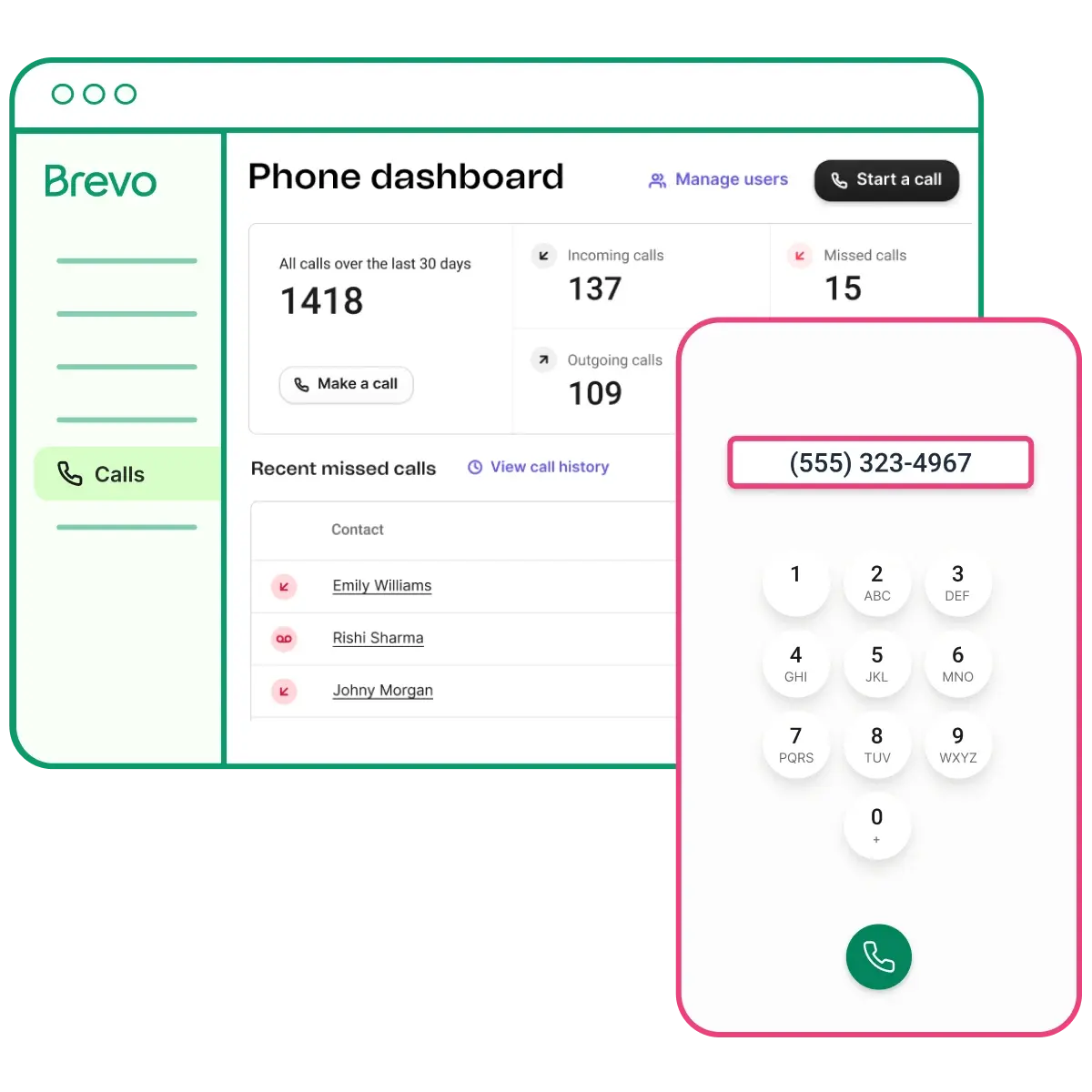Un número gratuito
Empieza a llamar: las funciones esenciales son gratuitas, el plan Pro cuesta 19€.
Una herramienta para todo
Encuentra tus contactos, historial de llamadas y grabaciones en Brevo.
Llama en todo el mundo
Haz y recibe llamadas de trabajo con la interfaz de llamadas web o la app.
Prueba Phone gratis
Crea tu cuenta gratis, sin tarjeta de crédito.Explora nuestros productos
Marketing Platform
Funcionalidades principales:
- Email marketing
- Automatización de marketing
- Campañas de SMS y WhatsApp
Sales Platform
Funcionalidades principales:
- Gestión de pipeline de ventas
- Seguimiento automatizado de oportunidades
- Reuniones y grabación de llamadas
Messaging API
Funcionalidades principales:
- API de email, SMS y WhatsApp
- Integración CMS
- Inbound parsing

